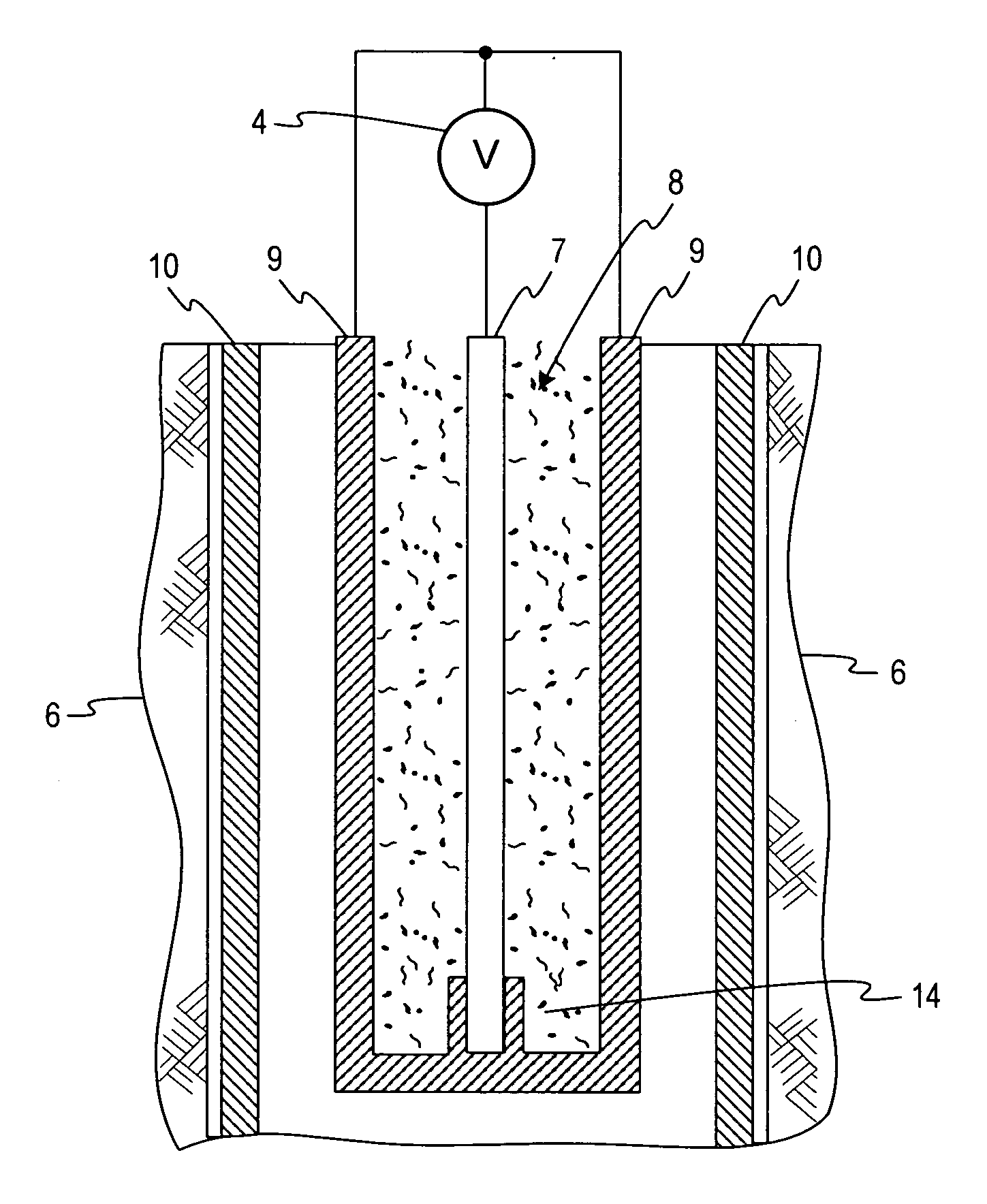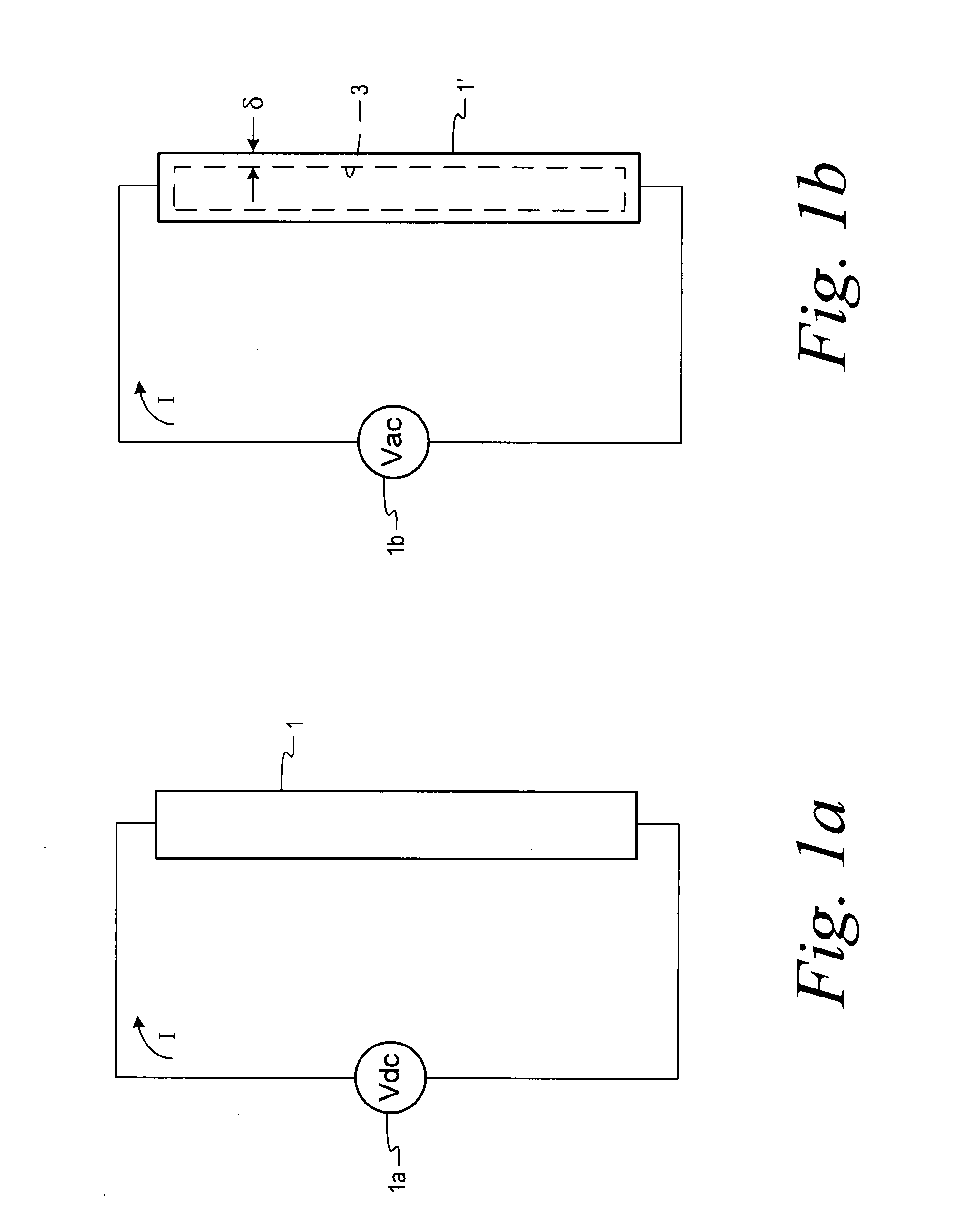Radio frequency technology heater for unconventional resources
- Summary
- Abstract
- Description
- Claims
- Application Information
AI Technical Summary
Benefits of technology
Problems solved by technology
Method used
Image
Examples
Embodiment Construction
[0043] This invention utilizes frequency-variable electromagnetic RFT heating techniques to heat commonly available (although not limited to) magnetic low carbon steel tubing or rods, such as used in oil fields. RFT heating techniques include technology used to design radio-frequency communication systems that employ frequencies as low as 7 Hz (such as the Schuman Resonance proposed for submarine command and control) and up to 5 MHz (for short wave communications).
[0044] To illustrate, FIG. 1A represents a 1 meter long thin (e.g., about 3 mm) diameter rod 1 of magnetic steel. This rod is connected to a d-c voltage source 1a. The current, I through the rod is simply determined by dividing the d-c source V by the resistance of the rod (e.g., about 1.6×10−2 ohms). If connected to 1-volt source, over 60 watts would be dissipated. To lower the dissipation to 10 watts, the diameter of the rod would have to be substantially reduced by a factor of 2 or 3 (this is why the filaments in light...
PUM
 Login to View More
Login to View More Abstract
Description
Claims
Application Information
 Login to View More
Login to View More - R&D
- Intellectual Property
- Life Sciences
- Materials
- Tech Scout
- Unparalleled Data Quality
- Higher Quality Content
- 60% Fewer Hallucinations
Browse by: Latest US Patents, China's latest patents, Technical Efficacy Thesaurus, Application Domain, Technology Topic, Popular Technical Reports.
© 2025 PatSnap. All rights reserved.Legal|Privacy policy|Modern Slavery Act Transparency Statement|Sitemap|About US| Contact US: help@patsnap.com



